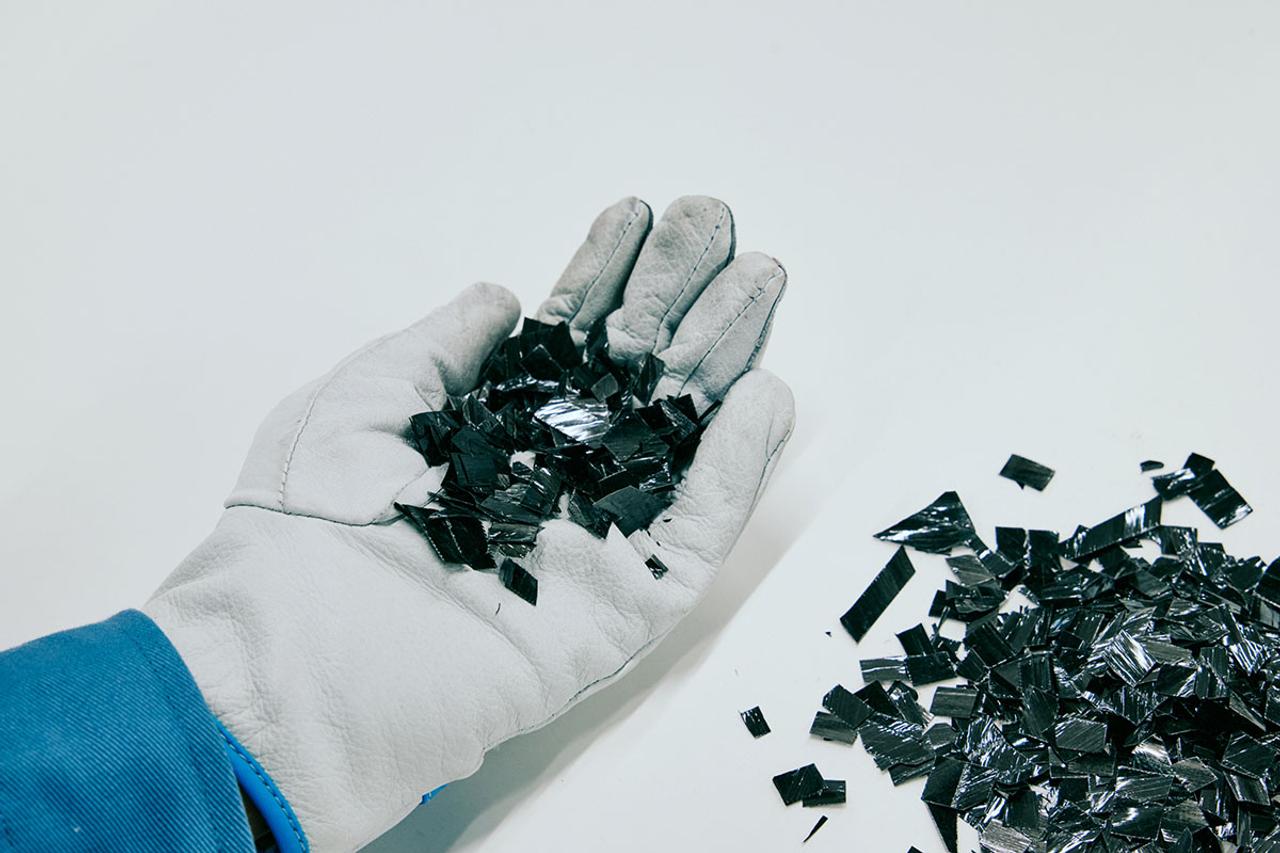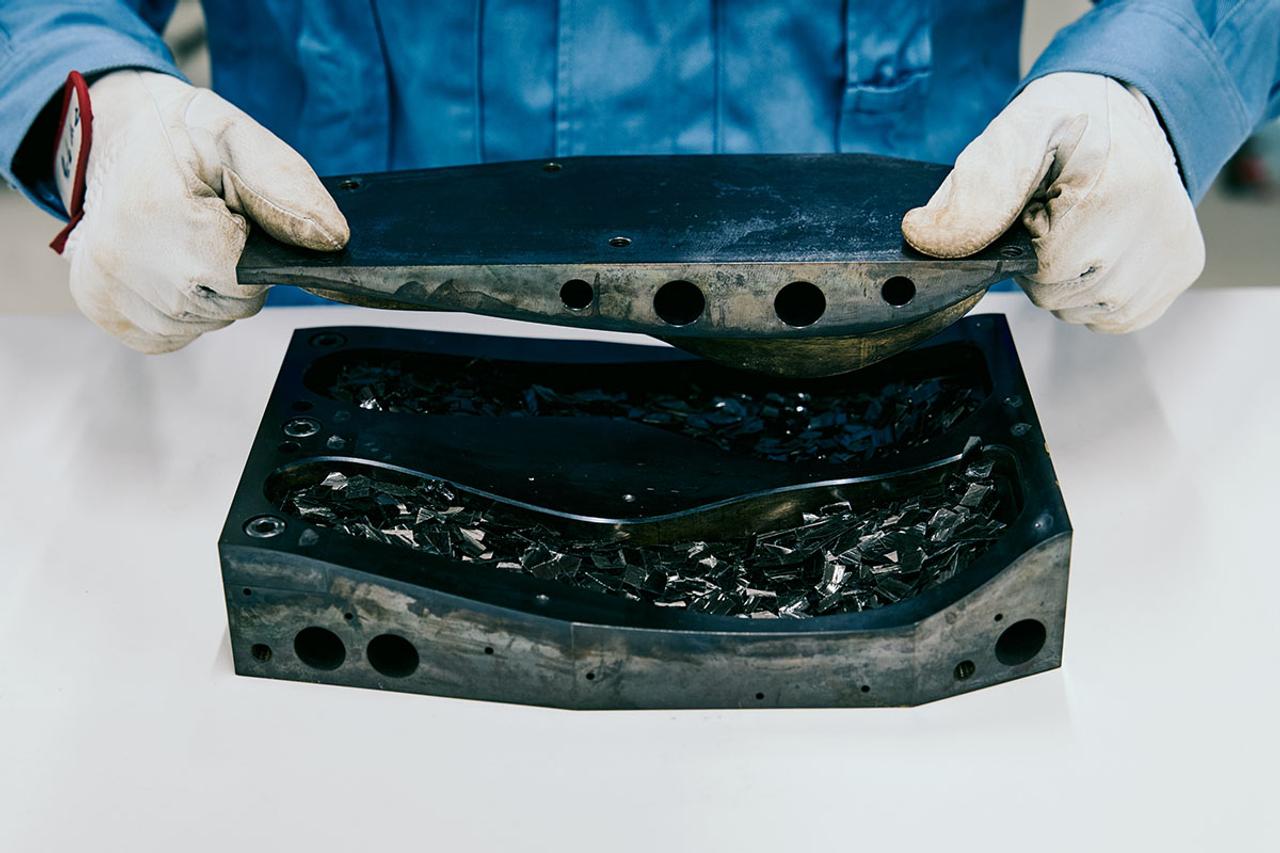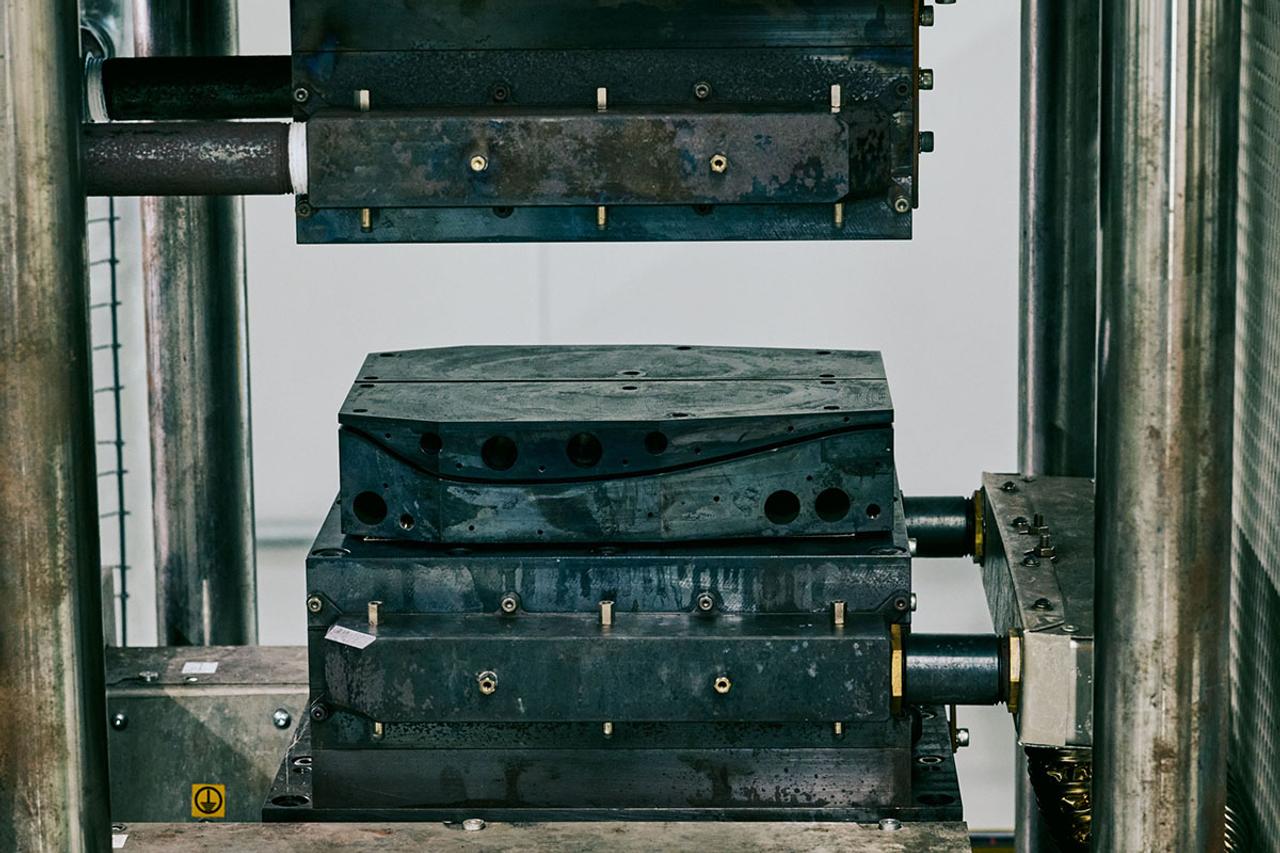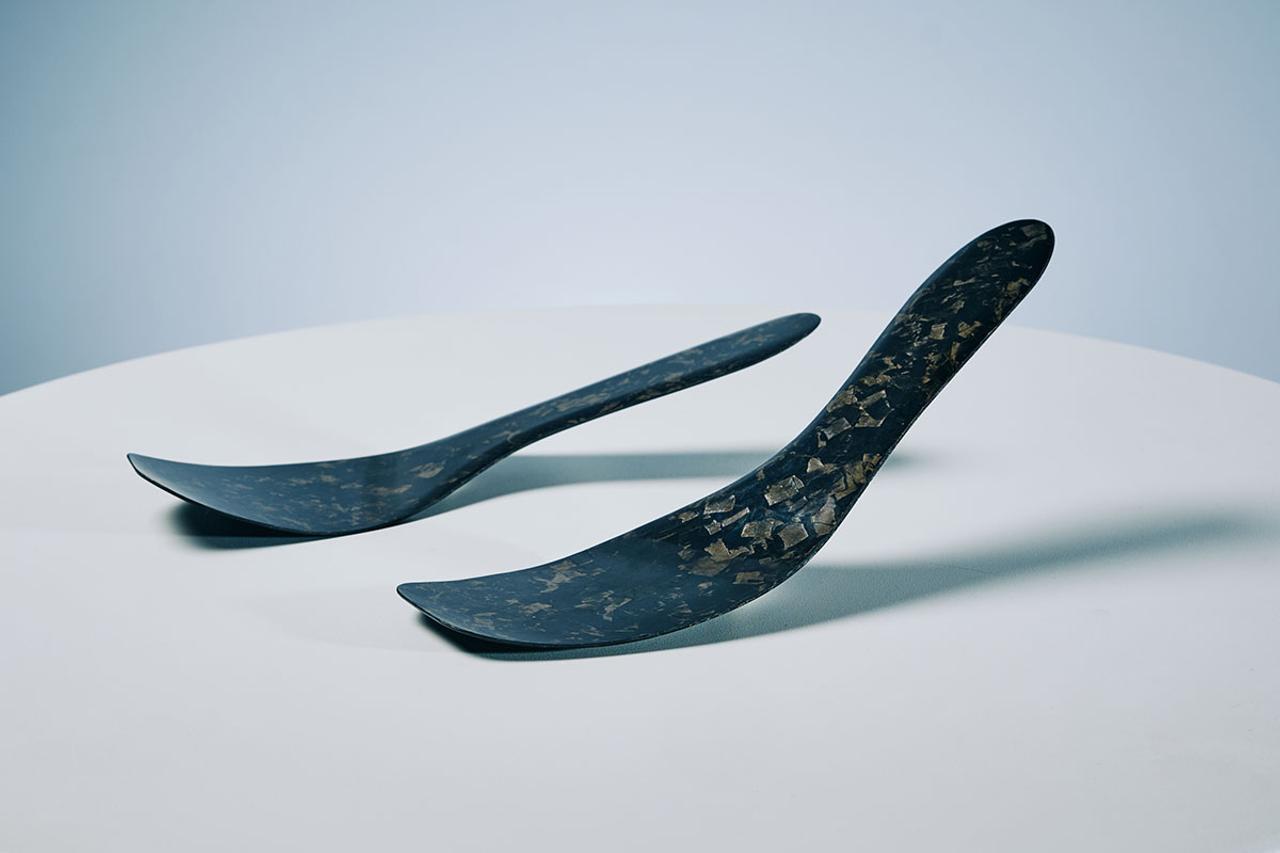A composite material that combines carbon fiber and resin.CFRP (carbon fiber reinforced plastic)”.It has the characteristics of being light, strong, resistant to corrosion, and resistant to repeated stress, and is still active in the aerospace and automobile manufacturing fields.It is an innovation that originated in Japan, and is still used around the world today. You could say they are in the lead.
In addition to manufacturing equipment such as jet engines and rockets, the company works in a wide range of fields including power plants, automobile turbochargers, and large bridges.IHIhas been paying attention to CFRP. This is because CFRP, which is lightweight yet strong like steel or alloys, can be used as a component of aircraft and rockets to improve fuel efficiency. Efforts are underway to manufacture parts such as fan cases that are actually used in aircraft engines using CFRP.
At the same time, I am strongly aware ofCFRP recyclingis. Offcuts created during the CFRP manufacturing process are difficult to reuse.Environmental impact during disposal is an issueIt has become.
On the other hand, the use of CFRP is expected to continue to expand in the future, including in the field of transportation equipment such as aircraft and automobiles. That is why IHI is thinking of using CFRP recycling technology to realize new manufacturing with low environmental impact.
What kind of efforts are they actually taking to develop CFRP recycling technology, find new applications for recycled materials, and establish a recycling system for the circular use of CFRP? Responsible for research and development at IHI Technology Development HeadquartersIzumi MatsukuraPromote collaboration between Mr.Rinko WatanabeWe get to know the actual situation through an interview with Mr.
CFRP is expected as an initiative for SDGs
IHI has a long history as a company that has strived for technological innovation.

Michiko Watanabe / Chief Manager, Collaborative Lab Group, Technology Planning Department, IHI Technology Development Headquarters
“Our company was founded as a shipbuilding company in 1853, the year of Perry’s arrival, and last year we celebrated our 170th anniversary.At that time, ships making international voyages were the largest mechanical devices in the world. In order to make this, we improved our welding technology to securely join thick steel plates together, and at the same time refined our technology to develop a highly reliable engine.” (Mr. Watanabe)
From there, the technology for rotating engines at higher speeds was improved, and it was later applied to fields such as aircraft engines and automobile turbochargers.
Under these circumstances, IHI has refined the technology of CFRP, which is lightweight and has excellent material properties. What are the company’s unique advantages?

Izumi Matsukura / Materials and Structures Group, Technology Infrastructure Center, IHI Technology Development Division
“Our strength is that we carry out comprehensive development in-house of materials, manufacturing processes, and design methods that are intricately interrelated.Achieves both product reliability and cost savingsIt’s right there.” (Mr. Matsukura)
Furthermore, in addition to the pursuit of reliability, as IHI expanded its pursuit of productivity and cost efficiency, the elemental technologies that IHI had improved came to be in demand in other fields. In recent years, we have been working to create innovation by collaborating across organizational boundaries such as universities, research institutes, and external companies.
“Not only do we create new and cutting-edge technologies, but we completely change the way we think.Generate innovation from ideas and combinations with existing technologiesThis awareness is changing.” (Mr. Watanabe)
Among these, we started working onCFRP recycling. Specifically, instead of using thermosetting CFRP, which is expensive to manufacture, we are developing a recycling molding technology for thermoplastic CFRP, which is expected to be used in many fields because it can be molded in a short time and reduces costs. .
“Currently, CFRP is being used in transportation equipment such as aircraft to reduce weight and thereby improve fuel efficiency.However, at the same time, we are also facing the problem of disposing of CFRP.Therefore, our company, which handles CFRP products,Fulfilling our responsibility to create products from a resource recycling perspectiveWith this in mind, we have started this initiative.” (Mr. Matsukura)
Aiming for recycling that balances quality and cost while reducing environmental impact
We asked him about the specific CFRP recycling process in detail.
“The scraps of carbon fiber and resin sheets generated in the manufacturing process of CFRP parts for aircraft engines are cut into small pieces and made into flakes. This is placed in a mold and heated and pressurized using a press. We will mold it.” (Mr. Matsukura)
CFRP recycling process (1)

Sheet scraps made of carbon fiber and resin
CFRP recycling process (2)

Cut finely into flakes
CFRP recycling process (3)

fill the mold
CFRP recycling process (4)

Form using a press machine
It seems that the current method of recycling CFRP is to separate carbon fiber and resin, but why did IHI develop another method?
“We were considering it. However, the process involves a considerable amount of material deterioration, and it takes an extremely large amount of energy to separate the materials. This would increase recycling costs and lead to additional CO2 emissions. It will be.
Therefore, when we thought of a method that would minimize material deterioration without separating the carbon fiber and resin, we came up with a method of cutting the scraps into small pieces and applying heat to melt the resin while pressing.” Mr. Matsukura)
However, there were challenges.
“The mechanical properties of CFRP change depending on the orientation of the fibers, but since the orientation of the fibers in our recycled CFRP materials is random, it is necessary to suppress the variations in mechanical properties caused by this. Achieving the target cost is also important, and in this project in particular, we are focusing on balancing quality and cost.” (Mr. Matsukura)
Recycled materials need to be revived as a new material while retaining the characteristics of CFRP, which are lightweight and strong, and at a low cost. We believe that no matter how environmentally friendly a material can be recycled, if it does not catch the attention of companies that will use it, it will not add value to the product.
Because it is recycled, it has the potential to be useful in a variety of industries.
CFRP recycled materialHowever, we are ultimately looking at recycling resources by reusing them as aircraft parts. At the same time, the company is looking for fields and products that can more quickly utilize the recycled materials it develops.
“Do users in fields other than the aviation industry really find value in recycled materials from aircraft engine parts? What kind of value can we provide? In order to find out,It is necessary to connect technology development with a way of thinking that goes beyond just circulating materials within the industry.That’s what I felt.” (Mr. Watanabe)
Currently receiving support from shoe manufacturers,competition shoesThe company is said to be working on the development of a CFRP plate that will be incorporated into the midsole
of the company.

r240215_106“CFRP has excellent properties such as strength and rigidity, as well as corrosion resistance and dimensional stability (characteristics that prevent it from expanding or contracting under various conditions).Due to its high original ability as a material, CFRP has the potential to add new value to existing products and create new products by applying it.
.

r240215_020
“It was difficult to determine whether we could create a CFRP plate with smooth, beautiful curves and performance that would satisfy runners, and whether we could achieve this with our technology, so we have created quite a number of prototypes. However, this is also a new challenge for us.” (Mr. Watanabe)
Creating an era in which everyone, both partner companies and rival companies, is conscious of recycling CFRPThe functions of technology and materials may be useful in fields that were previously unknown. And it may be a step toward solving social issues.IHI’s CFRP recycling
I have a feeling that this initiative will lead to the creation of such a bright future.“Through collaboration with partner companies, we have been strongly conscious of theI realized that businesses that incorporate resource circulation are viewed from a completely different perspective than values such as performance and cost.
Did.
We also thoroughly explain the story behind the material, including the process and significance of recycling, such as “Materials that should be discarded are recycled,” and “The strengths of CFRP materials for aircraft engines contribute to the impression of the product.” It was a big realization for our company that we need to understand and communicate this.Without thinking beyond performance and costRather than just saying “We are B to B…”, we provide products that truly provide value to users and society.
We need to continue to do so.
Through this activity, the team is able to seriously consider the need to drastically change the way we think about future product and technology development. I believe that our mission is to connect the recycling technology developed by Mr. Matsukura to the realization of large-scale resource circulation.” (Mr. Watanabe)
Mr. Watanabe and Mr. Matsukura hope that the CFRP recycling technology they have developed will not be limited to their own use, but will be used by many people.“While gathering information, I learned that many companies are concerned about recycling costs and quality.That’s why, in order to popularize CFRP recycling, we need to develop technology that can recycle stably at low cost.” I would like to develop it.We would like to propose and provide technology to everyone in the world and contribute to the realization of CFRP resource circulation throughout society.
https://www.youtube.com/watch?v=Kzukm0B_MCY
Please tell us your thoughts on recycled materials here
Click here for information on IHI’s CFRP recycling
Source: BusinessInsider
Emma Warren is a well-known author and market analyst who writes for 24 news breaker. She is an expert in her field and her articles provide readers with insightful and informative analysis on the latest market trends and developments. With a keen understanding of the economy and a talent for explaining complex issues in an easy-to-understand manner, Emma’s writing is a must-read for anyone interested in staying up-to-date on the latest market news.
